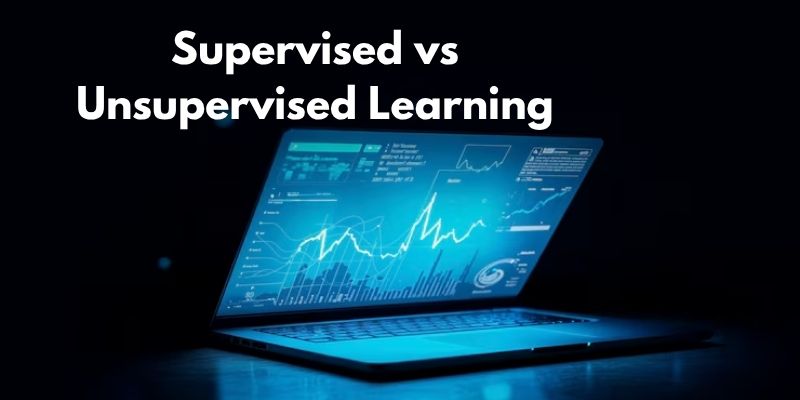
Machine learning is at the heart of modern data science, powering everything from personalized recommendations to fraud detection. Among the many techniques used in this field, supervised and unsupervised learning are two of the most important. Selecting the best strategy for your data analysis tasks requires an understanding of how they differ from one another. If you’re looking to gain hands-on experience with these concepts, enrolling in a Data Science Course in Trivandrum at FITA Academy can provide the practical knowledge and industry insights needed to excel in this rapidly evolving field.
In this guide, we’ll explore what supervised and unsupervised learning are, how they differ, and when to use each in your data science projects.
What Is Supervised Learning?
One kind of machine learning is supervised learning, in which the algorithm gains knowledge from labeled data. This means that each example in the training dataset comes with an input-output pair. The model uses this information to learn how to predict the output for new, unseen data.
For instance, in a supervised learning task, you might have a dataset of house features like size, location, and number of bedrooms, along with the corresponding house prices. The goal is for the model to learn the relationship between these features and predict prices for new houses.
Applications of supervised learning are numerous and include:
- Email spam detection
- Image classification
- Credit risk assessment
- Medical diagnosis
Common supervised learning algorithms include linear regression, logistic regression, support vector machines, decision trees, and random forests.
What Is Unsupervised Learning?
Unsupervised learning, in contrast, deals with data that has no labeled outputs. The goal is to find hidden patterns or groupings within the data. Instead of predicting a target variable, unsupervised learning focuses on discovering structure.
A popular example of unsupervised learning is customer segmentation. Imagine you have data about customer behavior, such as purchase history or browsing habits, but no labels indicating customer types. An unsupervised algorithm can analyze the data and group similar customers together, helping businesses create targeted marketing strategies.
Common applications of unsupervised learning include:
- Market segmentation
- Anomaly detection
- Topic modeling in text data
- Dimensionality reduction
Principal component analysis (PCA), hierarchical clustering, and k-means clustering are popular unsupervised learning algorithms. To master these techniques and more, you can enroll in a Data Science Course in Kochi and gain practical, industry-relevant skills.
Key Differences Between Supervised and Unsupervised Learning
The primary difference between supervised and unsupervised learning is based on the kind of data each employs. Labeled data is necessary for supervised learning. This means each data point in the training set includes both the input features and the correct output. The model uses this mapping to make predictions on future data.
Unsupervised learning, by contrast, works with unlabeled data. It seeks to uncover hidden patterns, structures, or groupings within the dataset without knowing what the outputs should be. The model is not guided toward a particular outcome but instead analyzes the data to find what naturally exists within it.
In terms of goals, supervised learning is about predicting outcomes. For example, it could be used to forecast stock prices or identify whether emails are spam or not. Unsupervised learning, on the other hand, aims to discover insights from the data, such as grouping customers based on their behavior or detecting unusual patterns in network traffic.
Supervised learning outputs known target values and provides performance metrics like accuracy or mean squared error. Unsupervised learning outputs unknown groupings or patterns, and its success is evaluated by how meaningful those groupings are to the user or business context.
In short, if your task involves making a prediction and you have historical examples with correct answers, supervised learning is the way to go. If your goal is to explore and understand your data without predefined labels, unsupervised learning is more suitable.
When to Use Each Approach
Your data and goals will determine whether you choose supervised or unsupervised learning.
Use supervised learning when:
- You have labeled data
- Your goal is to make predictions or classifications
- Performance can be measured using metrics like accuracy or mean squared error
Use unsupervised learning when:
- You lack labeled data
- Your aim is to explore data structure or detect patterns
- You’re interested in grouping, summarizing, or reducing dimensions
In many real-world data science projects, both approaches may be used together. For example, you might start with unsupervised techniques to explore the data and then apply supervised learning for predictive modeling.
Supervised and unsupervised learning are fundamental tools in the data science toolkit. By recognizing their distinctions, you can more effectively create machine learning solutions that correspond with your objectives and the availability of data. Determining when to apply each learning method can significantly improve the success of your data-driven approaches, whether you’re categorizing emails, dividing users into segments, or examining trends. To explore these ideas further and implement them in practical projects, think about signing up for a Data Science Course in Ahmedabad and take a significant step toward advancing your data science career.
Keep exploring, stay curious, and let the data guide your next decision.
Also check: Becoming a data scientist without a data analytics background
